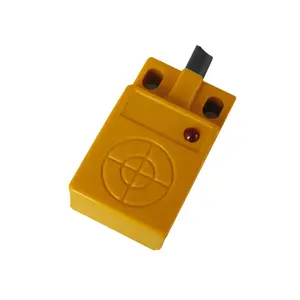
Series Wires Pnp Nc E2b Inductive E2k Capacitive Inductive 3 8mm Npn Proximity Sensors Switch Part Number Distance





















The 12v DC proximity sensor is a pivotal component in the realm of smart technology and electronic sensing. These sensors are integral to a multitude of applications, ranging from vehicular motion detection to energy-efficient lighting systems in commercial spaces. The versatility of 12v proximity sensors lies in their ability to seamlessly integrate with various other types of sensors, such as optical, temperature, or environmental, enhancing our ability to monitor and interact with the spaces around us.
There are several types of proximity sensors, each suited to specific applications. For instance, capacitive or inductive proximity sensors are commonly used in industrial settings for non-contact object detection. In the automotive industry, these sensors play a crucial role in safety and navigation systems, contributing to advancements in autonomous vehicle technology. Beyond industrial use, these sensors are also employed in consumer electronics, security systems, and even in sports technology to track player movements.
The construction of a 12v DC inductive proximity sensor typically involves robust materials that can withstand harsh environments, making them suitable for outdoor and industrial applications. The sensors' features often include a compact design, ease of installation, and the ability to detect metallic objects without physical contact. Their DC-powered nature ensures low power consumption, which is critical for battery-operated devices and systems that require efficient energy use.
The advantages of using 12v DC proximity sensors are manifold. Their sensitivity and accuracy in detecting presence or motion without direct contact offer a non-invasive solution, which is essential in delicate environments where contamination or damage is a concern. Additionally, the durability and longevity of these sensors provide a reliable performance in a variety of settings, from industrial machinery to everyday electronic devices.
DC proximity sensors often work in conjunction with other technologies to create comprehensive systems. For example, in conjunction with RFID technology, they enhance tracking capabilities in logistics and inventory management. In safety-critical systems, such as collision avoidance in aviation, proximity sensor 12v components are indispensable, ensuring the timely and accurate response of control systems.
In conclusion, the 12v DC proximity sensor is a key element in modern technology, with its extensive applications and benefits making it a sought-after component in various industries. Its ability to work alongside other sensors and technologies further cements its position as a valuable tool for innovation and efficiency in interpreting and interacting with the world around us.